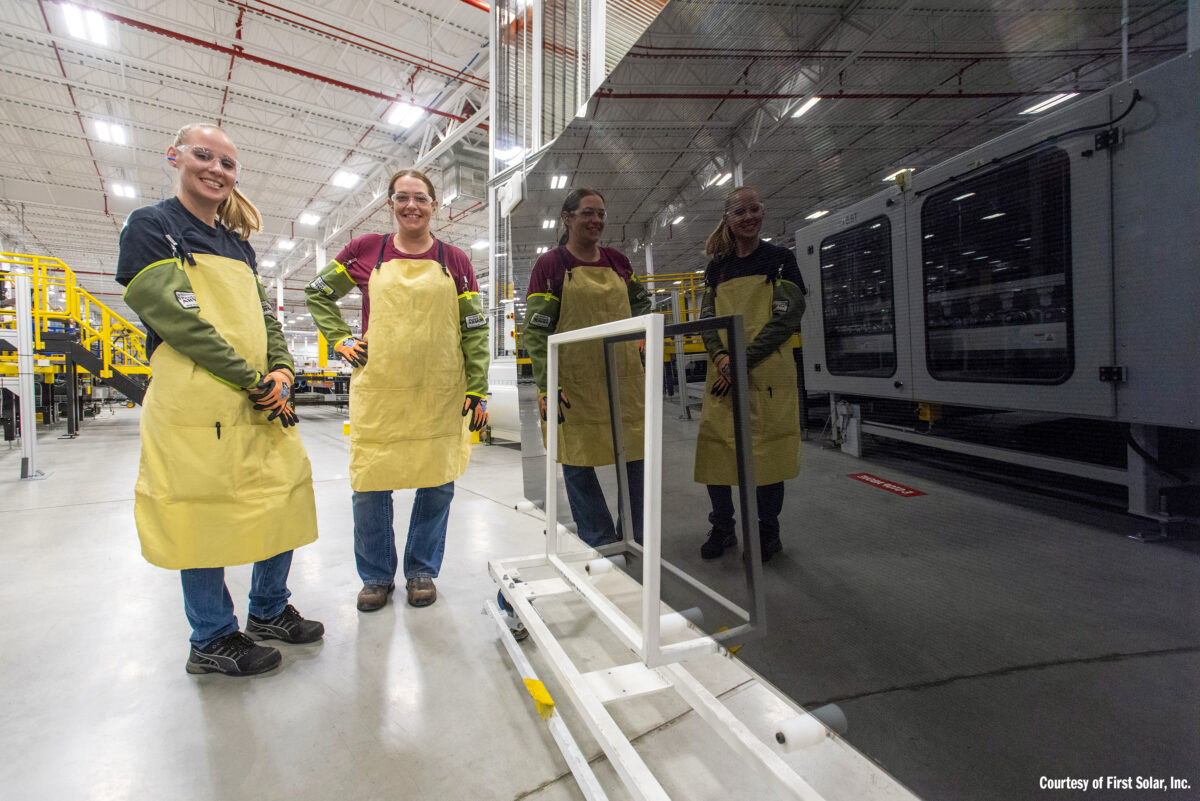Last month, as Vice President Harris toured an expanding solar factory in Georgia, she noted the vital connection between domestic manufacturing and deployment in the fight against climate change, saying “When we invest in climate, clean energy, and U.S.-based manufacturing, we invest in America and her people.” She was right to recognize that as we work to reduce our greenhouse gas emissions, we must simultaneously invest in our independence from foreign adversaries and create good-paying American jobs. Unfortunately, I believe last week’s domestic content bonus credit guidance issued by the U.S. Treasury Department may have lost sight of this critical goal.
For decades we have tried to break our unhealthy dependence on fossil fuels, whose global price is controlled by authoritarian regimes and whose profits fund aggression, most recently the Russian invasion in Ukraine. Again and again, we have seen this dependence on fragile supply chains result in economic destruction, price gouging of consumers, and job losses. But, as Vice President Harris alluded to, the rapidly expanding solar industry represents a way out of this destructive cycle while providing people with fulfilling careers.
To that end, for the first time a coalition of solar manufacturing companies have gotten together to try to break through the barriers in the way of a robust domestic supply chain: the Solar Energy Manufacturers for America (SEMA) Coalition. Our mission is to bring home the manufacturing of the entire panel – from cell to wafer to ingot to polysilicon – so that we are able to produce the cheapest form of new electricity here at home.
Our coalition worked together with champions in Congress such as Senator Jon Ossoff, Representative Dan Kildee, and Chairman Ron Wyden, to include a new tax incentive in the Inflation Reduction Act (IRA), Section 45X . Also known as the advanced manufacturing production tax credit, this provision was designed to provide the certainty necessary to invest billions of dollars in new factories needed for a domestic solar supply chain. This would allow us to finally return to the solar manufacturing game and compete with countries such as China that have built up such a tremendous lead.
To ensure sustained scale and success, the domestic content bonus was intended by the Congress to supercharge 45X, providing the necessary demand certainty for those factories to remain open and ensure true American clean energy independence. But for this effort to succeed, we need a domestic content standard that would draw distinctions between panels made entirely here and those with imported components.
As it relates to the guidance recently issued from the U.S. Treasury, a few basic principles about the solar supply chain must be understood.
- Solar development is very competitive. If your competitor gets a bonus to the tune of tens of millions of dollars and you can’t, you won’t build the project. This means the “bonus” standard becomes a de facto standard for most U.S. solar development.
- Our competitors already have billions of dollars of infrastructure in place to manufacture each step of the supply chain, which they have subsidized for decades. But we’re just getting started. While the 45X credit can get a factory built and operating for the duration of the IRA, if any one step of the supply chain is not recognized in the domestic content standard, there is no sustained, long-term advantage to building it here, as you can simply import pieces and get the same “bonus.” This is even more acutely true for the wafer and polysilicon facilities, since they are the most expensive to build.
- The more these expensive factories are built overseas (whether in China, India, Malaysia, or somewhere else) the harder it becomes to justify spending billions to build a competing plant here in the future.
China produces 97% of the world’s solar wafers – giving them substantial control over not only this critical piece of the supply chain, but the polysilicon that goes into producing the wafer. While the bonus released last week was designed to unlock future cell production in the U.S., a number of core components of the solar value chain were excluded. This will result in continued reliance on Chinese imports, many made without the robust labor and environmental standards we have in the United States.
The simple fact is the guidance issued last week will probably result in the scaling back of planned investments in the core, strategic components of the solar value chain. This likely will, unfortunately, cement China’s dominance over the solar industry and put us right back where we are with oil and gas – a price taker in the global marketplace, dependent on someone else to meet our energy needs.
The Administration must take a holistic view of the IRA when implementing the domestic content bonus so that it supercharges 45X and supports Congress’ key policy goal of reshoring the solar value chain. As long as the U.S. does not have an end-to-end solar manufacturing supply chain of all the strategic components of a solar panel, there is more work to be done. The SEMA Coalition remains committed to work with the Administration and Congress to implement policies that can finish the job of fully reshoring the manufacturing of the solar supply chain and creating good-paying American jobs while strengthening our energy and national security.

Mike Carr is the executive director of the Solar Energy Manufacturing for America (SEMA) Coalition. He previously served as the principal deputy assistant secretary for the Office of Energy Efficiency and Renewable Energy and the senior advisor to the director of energy policy and systems analysis at the U.S. Department of Energy from 2012 to 2015.
The views and opinions expressed in this article are the author’s own, and do not necessarily reflect those held by pv magazine.
This content is protected by copyright and may not be reused. If you want to cooperate with us and would like to reuse some of our content, please contact: editors@pv-magazine.com.








By submitting this form you agree to pv magazine using your data for the purposes of publishing your comment.
Your personal data will only be disclosed or otherwise transmitted to third parties for the purposes of spam filtering or if this is necessary for technical maintenance of the website. Any other transfer to third parties will not take place unless this is justified on the basis of applicable data protection regulations or if pv magazine is legally obliged to do so.
You may revoke this consent at any time with effect for the future, in which case your personal data will be deleted immediately. Otherwise, your data will be deleted if pv magazine has processed your request or the purpose of data storage is fulfilled.
Further information on data privacy can be found in our Data Protection Policy.